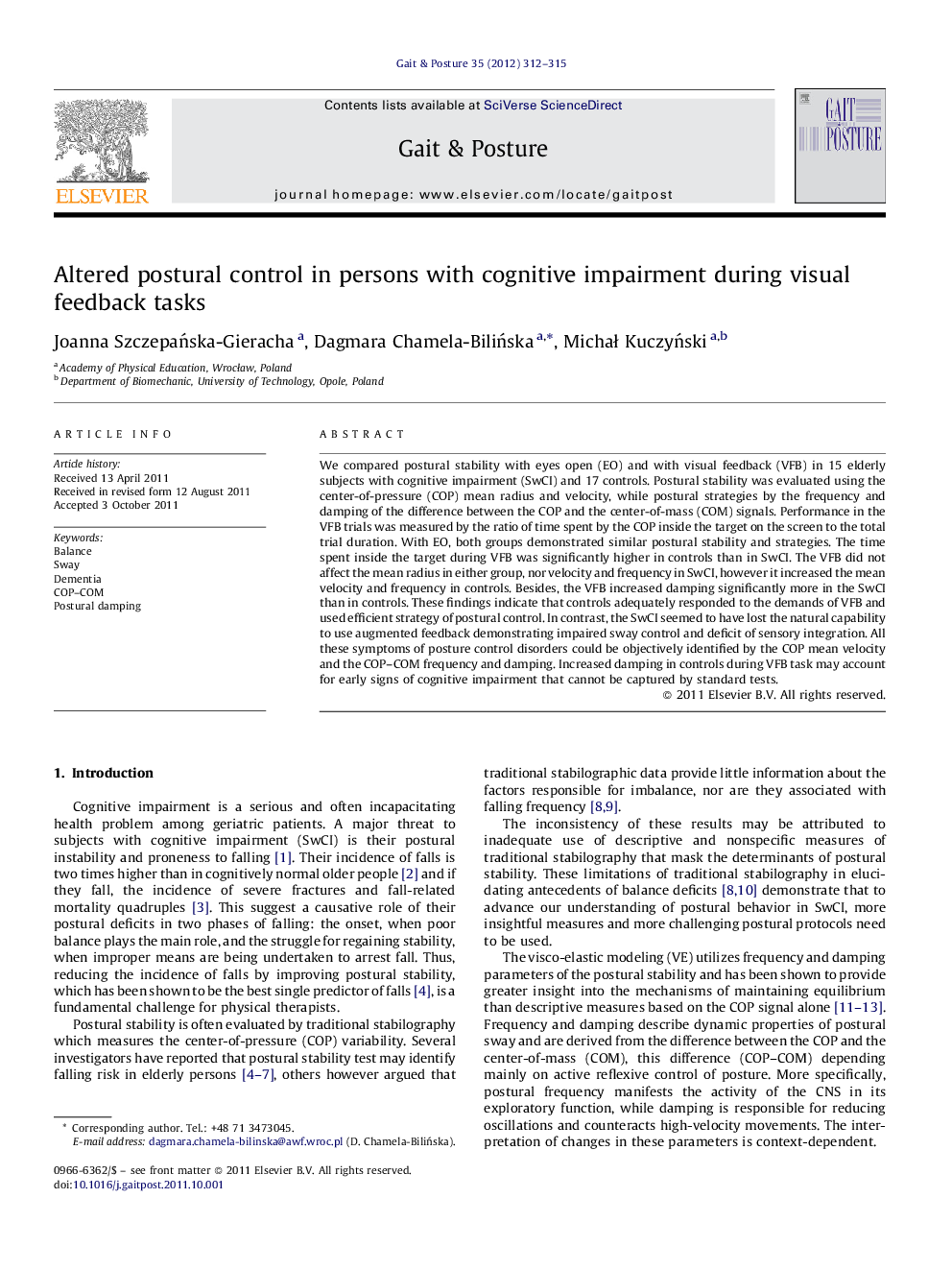| Article ID | Journal | Published Year | Pages | File Type |
|---|---|---|---|---|
| 6208147 | Gait & Posture | 2012 | 4 Pages |
We compared postural stability with eyes open (EO) and with visual feedback (VFB) in 15 elderly subjects with cognitive impairment (SwCI) and 17 controls. Postural stability was evaluated using the center-of-pressure (COP) mean radius and velocity, while postural strategies by the frequency and damping of the difference between the COP and the center-of-mass (COM) signals. Performance in the VFB trials was measured by the ratio of time spent by the COP inside the target on the screen to the total trial duration. With EO, both groups demonstrated similar postural stability and strategies. The time spent inside the target during VFB was significantly higher in controls than in SwCI. The VFB did not affect the mean radius in either group, nor velocity and frequency in SwCI, however it increased the mean velocity and frequency in controls. Besides, the VFB increased damping significantly more in the SwCI than in controls. These findings indicate that controls adequately responded to the demands of VFB and used efficient strategy of postural control. In contrast, the SwCI seemed to have lost the natural capability to use augmented feedback demonstrating impaired sway control and deficit of sensory integration. All these symptoms of posture control disorders could be objectively identified by the COP mean velocity and the COP-COM frequency and damping. Increased damping in controls during VFB task may account for early signs of cognitive impairment that cannot be captured by standard tests.
